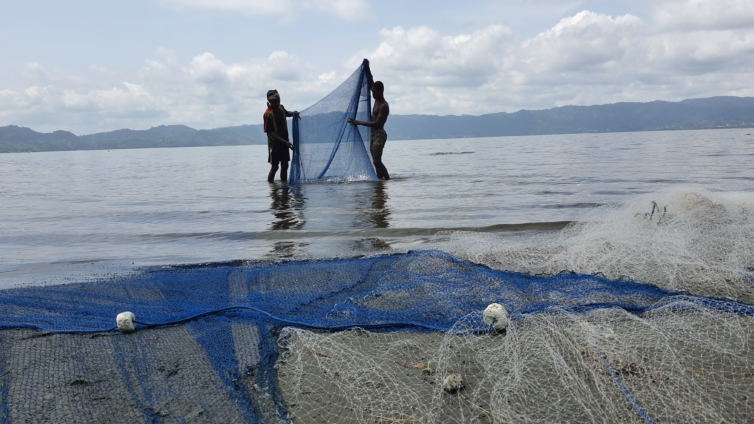Lake Bosomtwe, the only natural lake in Ghana and the biggest in West Africa is becoming endangered.
Our investigations reveal that the lake has parted ways with about 10 metres of its shoreline in the past 5 years.
Apart from indigenes gradually losing out on their livelihoods, as result of dwindling fish stock, fish species endemic to the lake, that is, Tilapia busumana and Hemichromis frempongi are facing extinction due to the invasion of Nile Tilapia.
Emmmanuel Kwasi Debrah explores how the UNESCO-declared biosphere reserve is gradually losing its hold, and the efforts being undertaking to salvage it.
Serpentine, will perhaps best describe the road leading to the largest natural lake in West Africa, Lake Bosomtwe, through Abono, the largest of the 22 surrounding towns.
The sharp curves and intermittent teases of the lake scenery are sure to whet anticipations of visitors.
But the steep route is soon rewarded with nests of Spectacled Weaver (Ploceus nigricolis) comfortably perching on the branches of young River tamarind (Leucaena leucocephala) as if they’re unafraid of human intrusions.
Various species of Senna and Nim trees (Azadirachta indica) lining the sides of the road give the landscape a medicinal panache.
At the shore, a member of the largest dragonfly family, Libellulide or skimmers wouldn’t miss a representation. The band-winged dragonlets (Erythrodiplax umbrata) can easily be spotted hovering around, and having resting stops.
Soup of nets
21-litre yellow jerry cans and 1-litre water bottles floating 100 metres into the lake might be mistaken for a river battling with plastic pollution, but beneath are nets held in place to lure curious fishes.
However, at certain points, the traps made from lowland bamboo (Oxytenanthera abyssinica) growing new leaves can be spotted.
“In the olden days, we were using bamboo. The fishes used to feed on the algae which grows on them but now it’s almost used up in this area, that’s why we’ve replaced the plastic containers,” Osei Obiri, a fisherman and boat owner explained.
Though Obiri is not enthused about the slow growth of algae on the plastic containers, he takes consolation in their ability to stay on the lake much longer.
“It takes a longer time for the plastics to develop algae but with time, the bamboo sinks to the bottom as it gets dumped,” Obiri revealed.
I’d requested a drive on the lake to immerse myself in its much touted scenery. However, Obiri’s single-engine wooden boat would’ve been more fun to ride in, if not for the series of maneuvers.
All the 22 communities have their traps spread across the 10.5-kilometre-diameter lake.
“Driving on the lake requires great mastery. If care is not taken, the boat’s fan can get entangled on one of the nets, and we’ll get stuck. Every community has a net here. It has been apportioned like a farm,” he seemed a bit helpless with the myriad of traps.
Though seeing a Blue-breasted kingfisher (Halcyon malimbica) attentively mapping out the water for a young fish was relaxing, I wasn’t satisfied.
Two teenagers effortlessly fishing with padua (the traditional wood board) doused my cravings.
But I sought to find out about their catch as they rode ashore. After all, my 15-minute-booked adventure had come to an end.
I waited for about 5 men including the teenagers to strenuously pull out the drag net. Only 31 fishes had availed themselves. They could fill a quarter of the 10-litre baskets used to cart the fish to the market.
“O, the difficulty was from the weight of the net,” I surprisingly exclaimed.
“We could harvest 4 to 5 baskets some years ago but now we can hardly harvest one basket,” Kofi Nyame, a fish farmer and tour guide, sadly recounted.
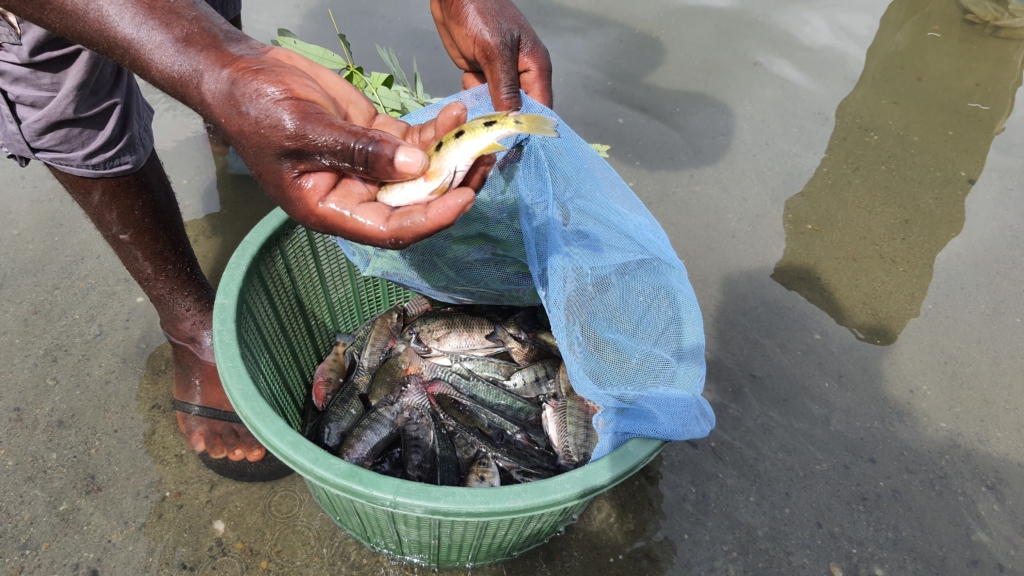
The trap and gill nets have been used for centuries.
A recent investigation has however seen a new development: The introduction of seine or drag nets.
George Ampong is vice chairman of Bosomtwe Fishermen Association.
He told me members of the association invest, on average, 1,500 cedis on each drag net.
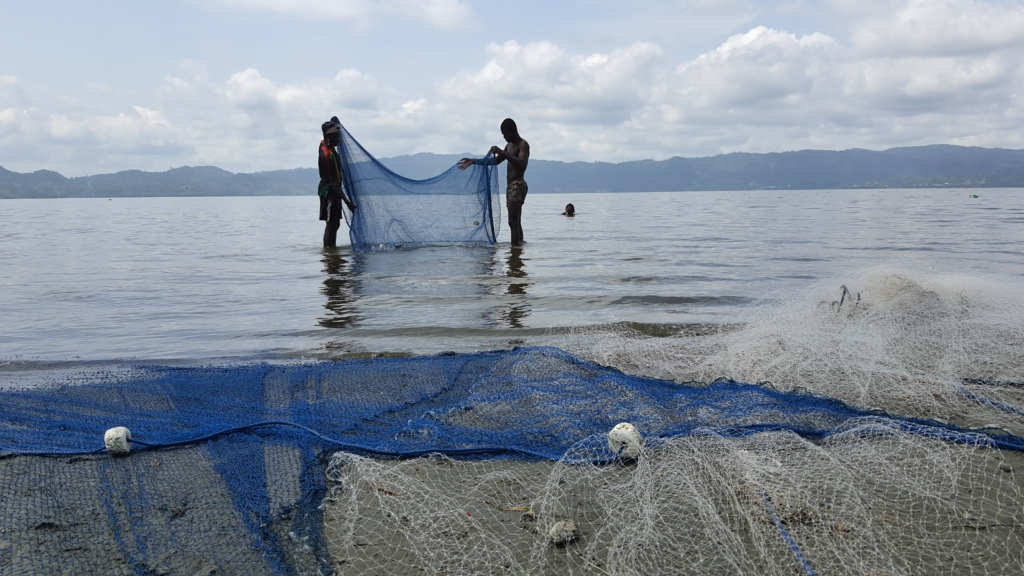
Dr. Kwasi Adu Obirikorang of the Department of Fisheries and Watershed Management of the Kwame Nkrumah University of Science and Technology has been conducting investigations on the Lake.
He has observed about 7 communities are now using the drag net. He counted close to 30 drag nets in Abono alone.
“They keep dragging and they go in cycles and they’re getting more of the tilapia,” he revealed.
Over fishing and threat to livelihood
A survey conducted 46 years ago, had documented 11 fishes belonging to 5 families. A recent survey has however revealed the presence of only 5 species of fish.
Interestingly, all 5 species are from the Cichlids family. The well-known member has been Paripari (Tilapia busumana) followed by Nile tilapia (Oreochromis niloticus) and Kaenbre (Tilapia discolor)
Apatre fufuo (Sarotherodon galilaeus multifasciatus) occupy third spot and finally, Komfo (Hemichromis fasciatus).
Sadly, 2 fishes from the Minnows or Carps family; Barbus ablabe and Barbus trispolis are gone.
Roloffia petersii and Epiplatys chaperi of the ray-finned fish family are nowhere to be found.
And Ghana-Kaulquappenwels (Amphilius atesuensis), a member of the mountain catfish family, has also disappeared.
But it hasn’t been all rosy for the Cichlids. A Gunther’s Mouthbrooder (Chromidotilapia guntheri), Hemichromis frempongi and Coptodon discolor will rarely pass by the nets.
Of the catch, I chanced on earlier, the fishermen could identify each of the 5 native species.
Researchers have found both seasonal and monthly variations in species dominance, Kaenbre (Tilapia discolor) have been more dominant in September fish harvest.
An aquaculturist at the Kwame Nkrumah University of Science and Technology, Prof. Nelson Agbo, who used to witness the dominance of Apatre fufuo (Sarotherodon galilaeus multifasciatus) attributes the situation to ecology and availability of food.
“Different species will feed on different organisms. So they have their special niche. Their habitat even differ.
“At particular times when particular feed are available, particular species have food which helps them to grow more and produce abundantly,” he explained.
A recent survey reveals more than 1,000 fishermen from the 22 communities. Each community contributes about 45 fishermen.
“There could be over 100 fishermen in the larger communities such as: Obo, Pipie No.2, Anyinatiase, Adwafo, Amakom and others,” Prof. Agbo said.
Though I was lucky to find some fishing in the afternoon, when I arrived, around 1; 30 p.m., mostly, fishing starts at dawn. But it’s not unusual for their activities to stretch till dusk each day of the year.
Fish like the Jewel-banded or Komfo (Hemichromis fasciatus) are generally small.
“If you want to wait for them to grow big before you catch them, you’ll wait endlessly,” one of the fishermen, Nti jokingly told me.
But the ones which are marked to grow bigger such as the Nile tilapia (Oreochromis niloticus) could hardly fill my entire palm.
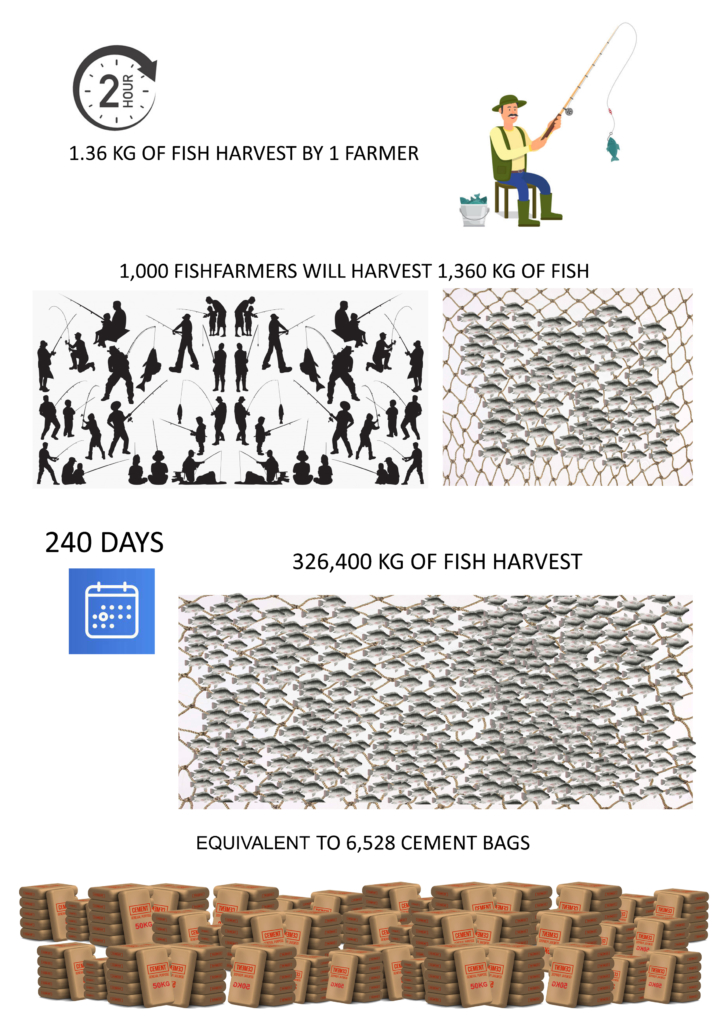
Some of the species of tilapia in the lake are mouth brooders. The few eggs produced are kept in the mouth to give the right temperature for hatching, just like how incubators work. In some species males even take up this role.
At this stage, eating ceases, and the eggs will be in the mouth for one week to a fortnight.
The energy used to breed the egg and storing them in the mouth results in small body size of females.
As multiple spawners, which means they breed several times in the year, disturbance of the ecosystem, can interrupt this cycle.
“They take three months to breed. At the end of the spawning season they actually reduce in size before they start to eat again and prepare for another round of spawning. A disturbance can even cause the eggs to come out of their mouth,” Dr. Agbo pointed out.
On regular days, the fish vendors would be seen busily frying the fish for would-be buyers and visitors.
Today, the grill and firewood lay on the ground, oblivious of when they’ll be called to duty.
George, 50, has subsisted on the lake throughout his entire life.
Though the dwindling fish stock has forced many of colleagues to take up other occupations in nearby towns, he has decided to go into boat hiring.
“At first, you’d see many fishermen on the lake but as you can see, the whole place is left with 2 fishermen. It’s useless to go fishing.
“The hardship has been severe, that’s why many have looked for jobs elsewhere.
“I got this boat to support the family,” he said.
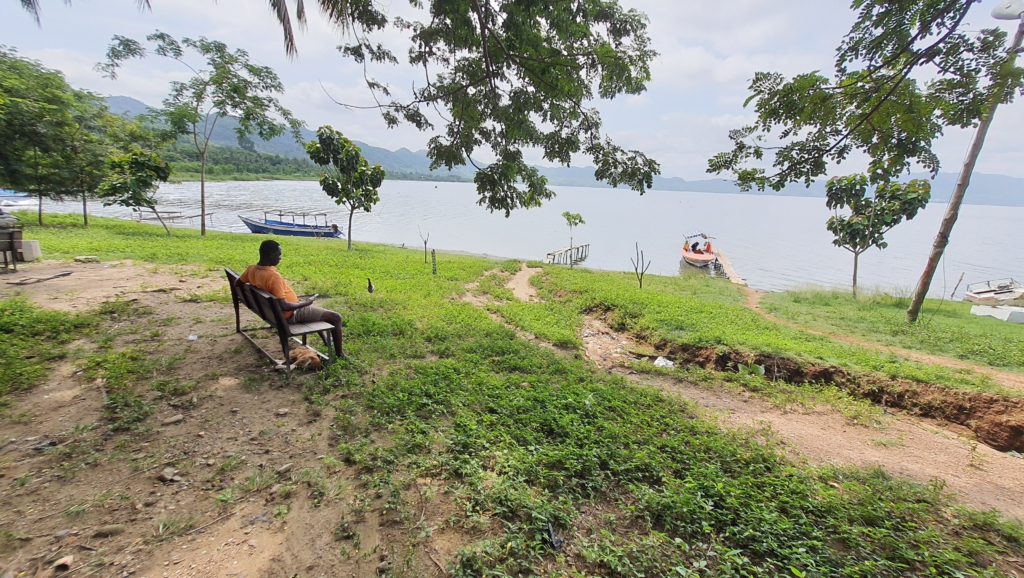
Nile tilapia the bully; change in diversity
8 years ago, two Ghanaian private investors who had evaded the Water Resources Commission and Environmental Protection Agency’s approval, set up 40 fish cages on the Abono part of the lake.
The two farms stocked two strains of the Nile tilapia: the local tilapia strain and another suspected to be a Genetically Improved Farmed Tilapia.
Though their activities were soon halted by authorities, some of the tilapia escaped into the lake.
“Directly opposite to Abono, another fish farmer who was emboldened by this guy’s move also set up a caged farm. The fish introduction is from the escapes from the two farms,” Dr. Obirikorang recounted.
With my initial interactions with another tour guide, Kofi Adu, the Nile tilapia were said to have died.
However, the earlier catch by Nti and friends had confirmed otherwise.
“This is the tilapia we all know,” Sammy, Nti’s friend confirmed while holding the palm-sized Nile tilapia.
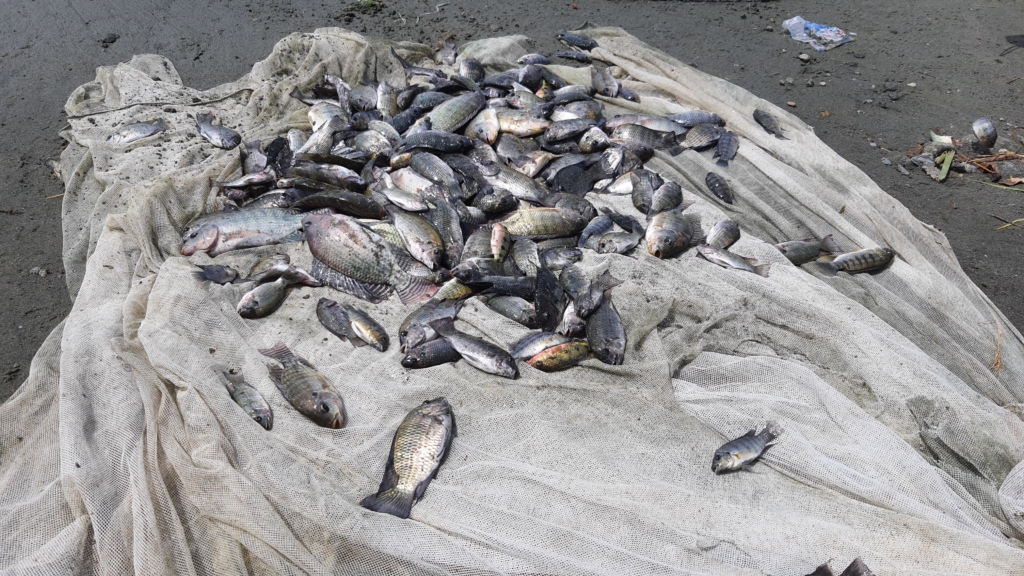
Dr. Obirikorang used to count a 10 percent make-up of the Nile Tilapia in the catches, but our investigations have revealed that it has risen gradually to almost 100 percent.
The Nile tilapia can thrive in varied milieu within an ecosystem. They’re fast breeders and carry their fertilized eggs in their mouths to find new sites.
Their ability to tolerate sub-optimal water has made them suitable for aquaculture.
They’ve been found to compete for food and space disrupting the community structure.
The Nile tilapia’s prowess manifested in a 1995 study in Lakes Kyoga and Victoria where their presence led to the decline of native tilapia species.
Dr. Obirikorang is afraid the invasive nature of the Nile tilapia can become a very big problem in the future.
“In the first year after they (private investors) left, there was no sign of the tilapia but now, we can see that the Nile tilapia account for more than half of every fish catch.
“There was one catch that came and it was almost 100 percent of the Nile tilapia, and only one of the Hemichromis was present.
Dr. Obirikorang in one of their expeditions surprisingly caught a Nile Tilapia weighing 600 grams!
“Anywhere the Nile tilapia has escaped, they become invasive. They breed faster and grow bigger.
“For a fish to grow that big on natural food not on feed is most likely not a native species,” he was surprised.
In Kenya, Chromidotilapia guntheri were found to have crossbred with Nile tilapia to form a new species. A development Dr. Obirikorang dreads.
“In Kenya, they ruled out cross breeding but they later observed in extreme cases Chromidotilapia guntheri can crossbreed with the Nile tilapia.
“In few years, we’ll see the ecological impact,” Dr. Obirikorang said with a fear-assented voice.
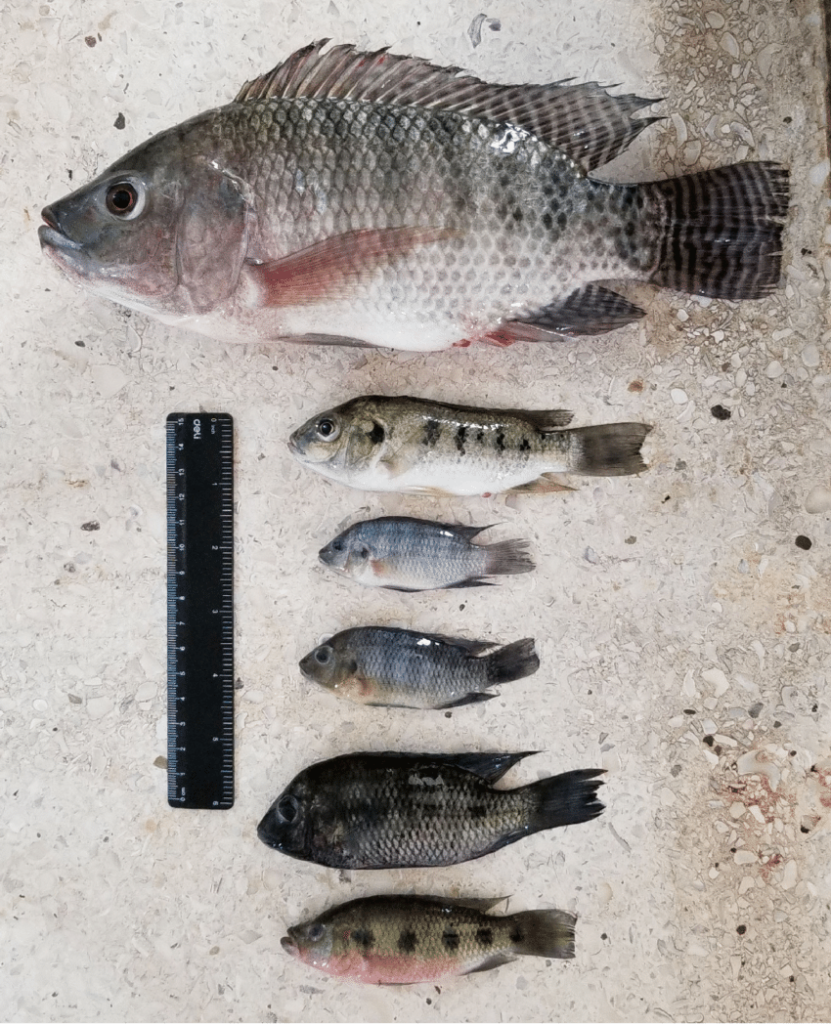
in the first sampling. From top to bottom: Oreochromis niloticus, Chromidotilapia güntheri,
Sarotherodon galileaus, Tilapia busumana, Coptodon discolor, Hemichromis fasciatus. Credit: Dr. Obirikorang
When the gods even understand
The lake Bosomtwe is considered a deity.
The lake has been draped in taboos for many years in a bid to preserve its sanity. Fishermen weren’t allowed on the lake on Tuesdays. Those who defied these taboos were made to pacify the gods through animal sacrifice.
That has however become a thing of the past. Fishermen are now seen on the lake all day and all night.
Mr. Ampong blames the situation on the death of the last priest of the Lake.
“He ensured the taboos were fully obeyed,” he commended the dead priest. “Since he died over 40 years ago, everybody seems not to care about the taboos anymore.”
Dr. Obirikorang is also worried: “Now the traditional rules are dying. They think they need to make more money so they fish every day, even at night. I spoke to one of them who said, “The gods will understand,” he recounted.
Shrinking shoreline
A 40-year-old abandoned pub tells of the reach of the lake. 4 feet high, 2 feet diameter round pillars were meant to withstand the force of the lake.
“It was built with waterproof cement," a former caretaker, Samuel Titiati told me, lightly knocking the rock-like structure. “We could sit on the veranda with our legs in the lake.”
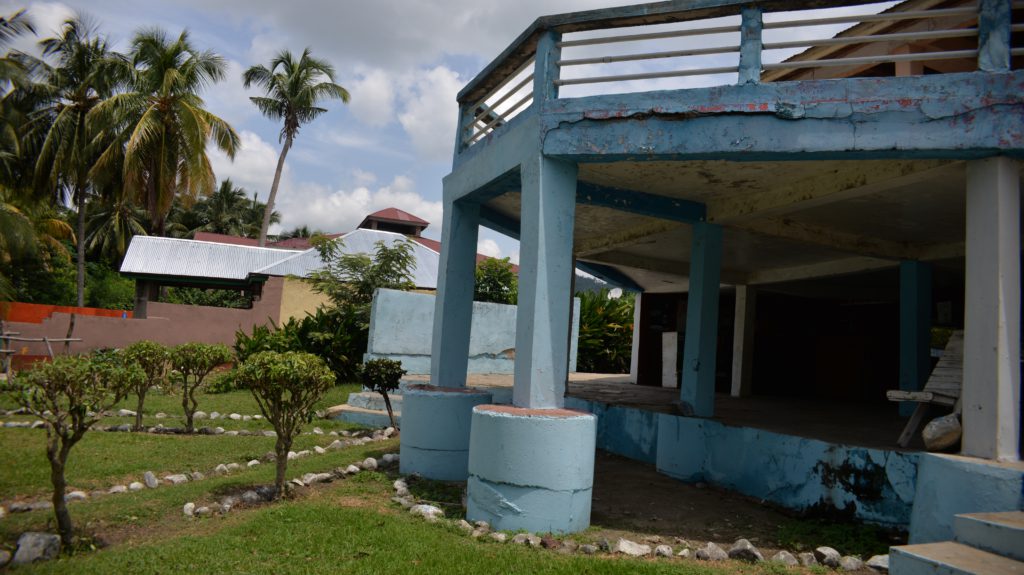
A study published in the journal of Scientific and Research Publications had looked at the lake's receding shoreline from 1994 to 2010.
It found out the lake has been receding, on average, 7 metres every 4 years.
In my interactions with Samuel and elders of Abono, I found out that the lake from the Abono side has receded by 10 meters in the past five years.
“In 2002, the Lake receded to 10 meters and decreased further to 12 meters four years down the line. In 2021, it has receded to about 11 meters,” he was puzzled.
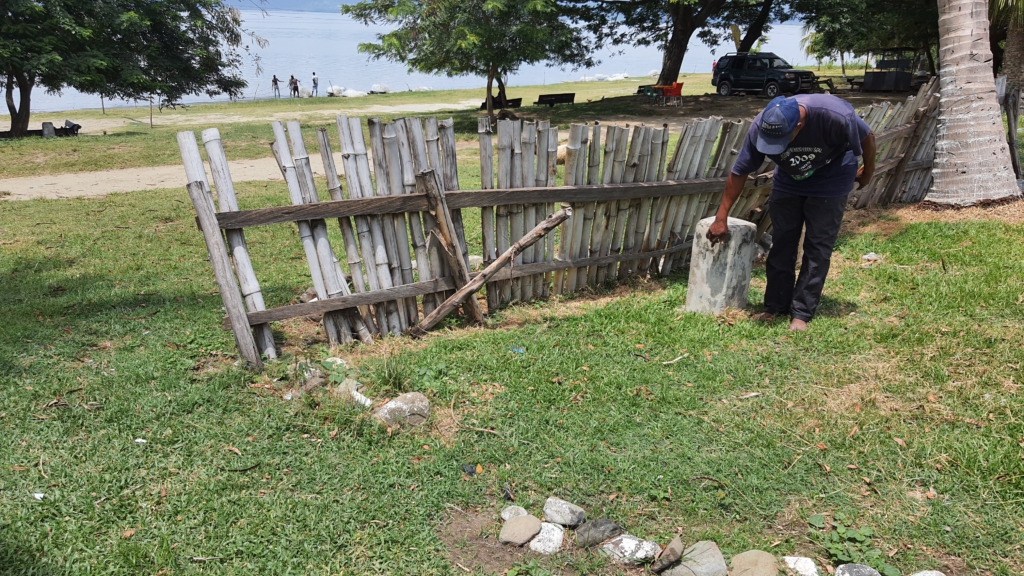
For centuries, six rivers have been flowing into the lake, however human activities have led to the drying of these sources.
Prosper Antwi is programmes manager of A Rocha Ghana southern sector.
He is worried only three rivers presently flow into the lake.
“I can count about three rivers which flow into the lake but even that it’s only in the rainy season.
“The rest are dead. The lake is not able to recharge itself,” he revealed.
He again complains, ‘land grabbing’ has become an issue as residents quickly move in to set up farms at the fringes as the lake recedes.
“They quickly go in to establish farms like plantain since they do well because they believe it’s nutrient-rich.
“The more it’s shrinking, the more they are farming,” he said.
Sedimentation and algal invasion
Agricultural activities are growing heavily in the area. Plantain, cocoa, cassava cultivation among others have been featured prominently.
I found, for instance, that the plantains grow about 10 meters from the lake. Though I observed several plantations around the Abono, the other communities like Pipie are heavily engaged in agricultural activities like animal rearing.
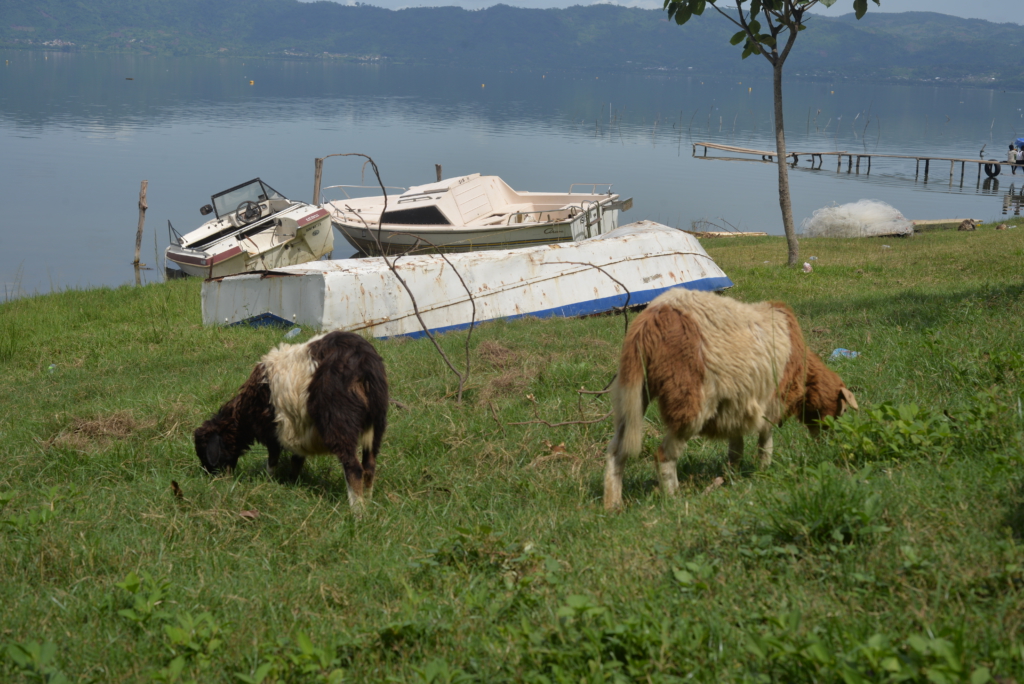
Scientists fear the increased use of agrochemicals like fertilizers can result in the biological phenomenon known as eutrophication.
This is where water bodies become rich in nutrients such as nitrates leading to the excessive growth of algae or plants.
Sounds of chain saw machines deep in the forest are a common place.
With logging becoming prominent in the Lake Bosomtwe area, soil erosion and high temperatures are also inevitable.
A principal research scientist at the Soil Research Institute, Dr. Edward Yeboah says sedimentation coupled with evaporation can negatively impact aquatic life.
“As the top soil is washed into the lake, the volume of the water will reduce, and this will affect aquatic life.
“The high temperatures will cause excessive evaporation of the lake,” he cautioned.
The fisherman may not all be worried about the diminishing bamboos, the fishing board, Padua made from buoyant umbrella tree (Musanga smithii) is having its share.
I found out the situation has caused fishermen to turn their attention to trees like Odum (Milicia excelsa) or Wawa (Triplochiton scleroxylon). Unfortunately, they too, are hard to find.
“Now, before we can find some Odum, we’d have to go to the thick forest and that is very expensive to procure,” he said.
Prosper Antwi explains the uncontrolled logging is contributing to the receding shoreline.
“Anywhere you have trees and grasses, they stop erosion and create the necessary micro climate.
“With trees, the heavy branches and leaves prevent the raindrops from directly hitting the ground then they drip slowly, so they don’t cause gullies or rails,” he added.
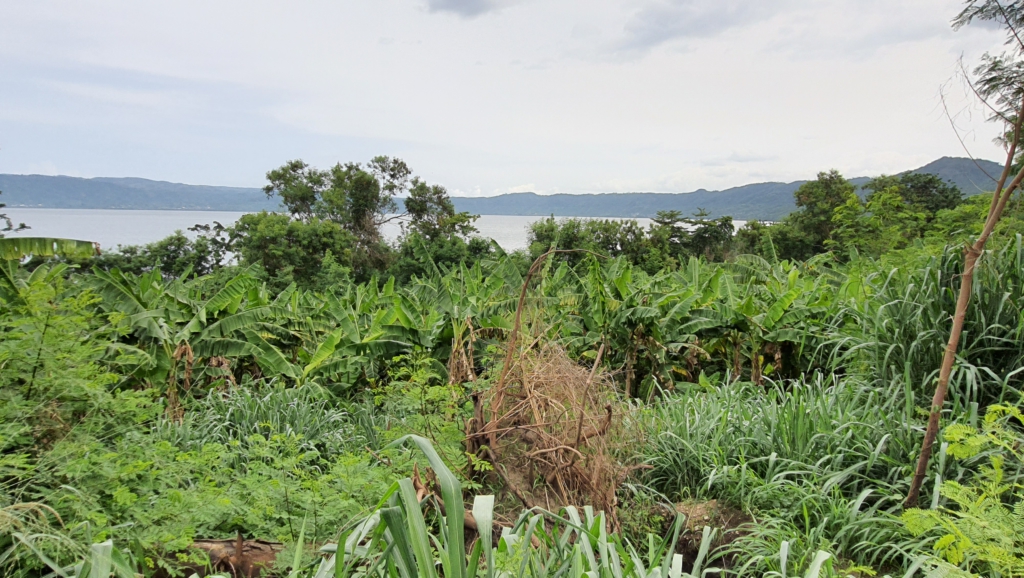
As a major tourist destination, resorts and hotels continue to make incursions.
It is estimated over 2,000 people invade the beach during public and national holidays. The proximity to the regional capital means visitors will throng to the area.
Unfortunately, reveler visitation seems to pose some level of harm. Haphazard littering has been the order of the day. Every catch seems to be accompanied with sachet rubber.
The run offs carry the baggage generated by revelers and inhabitants into the lake impacting the water quality.
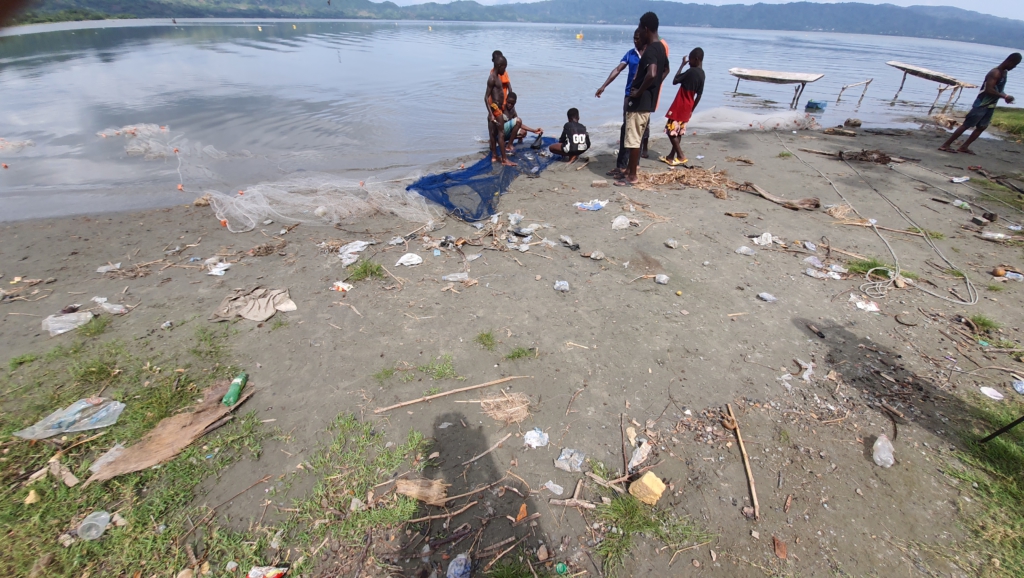
A biosphere reserve in fear
Lake Bosomtwe is of relevance to international conservation. The UNESCO declared it a biosphere reserve in 2016.
As one of six major meteoritic lakes in the world, it is considered a unique national resource.
The lake catchment, spanning the districts of Bosomtwe and Bosome-Freho, is a mixture of three unique types of ecosystems forests, wetlands and mountains making it a biodiversity hub.
The major tree species are Ceiba pentandra, African oil palm (Elaesis guineesis), Terminalia (Terminalia Spp Funtumia Spp)Senegalese evergreen(Trema senegalensis)and fig tree (Ficus Spp).
The tree pangolin (Phataginus tricuspis) happens to be the only animal species of serious conservational significance. The red-chested cuckoo (Cuculus solitaries), the western green mamba (Dendroaspis viridis), the marsh mangoose (Atilax paludinosus), the white-crested hornbill (Tockus albocristatus) and the lesser spot-nosed monkey (Cercopithecus petaurista) are some other species found on the reserve. Endemic to West Africa are Tullberg’s soft furred mouse (Proamys tullbergi) and the shrew (Crocidura gradiceps)
Over 50,000 inhabitants inhabit the Lake Bosomtwe enclave.
The majority of the people derive their source of livelihood from fishing and farming.
Tourism has also improved the wellbeing of the people. Places of convenience and boreholes have been built with revenue generated.
The area has served as a niche for research, especially on climate change, and environmental education for educational institutions.
In March 2021, a private developer cleared acres of the lake’s land to make way for a mango plantation.
The developer encroached the buffer of the tourist site cutting down about 600 trees planted along the banks of the lake.
The development was met with an outrage from the Manhyia Palace which asked him to replant trees.
Though this was instantly curtailed, many of such activities have gone unnoticed.
According to the UNESCO, over 30 tree species including 3 Scarlet species are threatened by overexploitation. Significant exploitation pressure is mounting on the 3 Red species.
These include timber species such as the Khaya ivorensis and Triplochiton scleroxylon.
29 species of birds including 2 of conservation interest and 29 species of mammals, 19 species of butterflies, 8 species of ants, termites, 5 species of amphibians and 2 species of reptiles are also endemic to the forest ecosystem.
Tilapia busumana and Hemichromis frempongi are considered vulnerable and found nowhere else in the world.
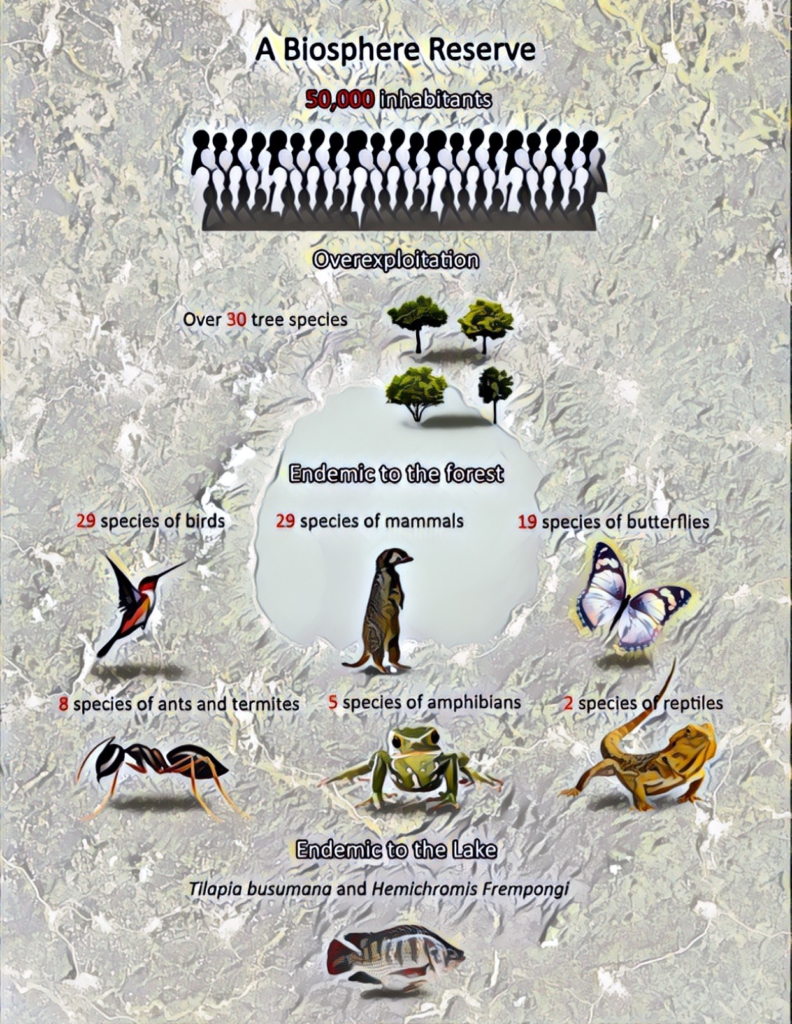
Towards sustainable Lake Bosomtwe
As an inland crater, the Lake lacks known outflows. As such, it’s prone to pollution.
Conservation has become crucial in managing the inflows of dissolved substances to ensure that the lake supports both human and aquatic life forms.
Conservation of plant life within the slopes will ensure the sustainable exploitation of the lake and slow the buildup of sediments.
The biosphere reserve is aimed at sustainable management of the natural resources of the Lake and its immediate environs.
The UNESCO has developed a broad document, describing how to protect the water quality and prevent contamination.
Bye-laws to preserve the natural resource, erosion control, improved livelihoods and capacity-building to achieve efficiency in the management of the resource are also part.
One of the partners, A Rocha Ghana has been tasked with providing alternative livelihood avenues to reduce overdependence on the lake.
Before that, A Rocha Ghana has been working with the communities since 2012.
The organization in its bid to strengthen community resource management at the Lake adopted a concept originally developed by the Wildlife division of the forestry commission of Ghana.
The Community Resource Management Area (CREMA) is a natural resources governance and management model which prioritizes local community participation in sustainable and responsible management of natural resources in Ghana.
“CREMA seeks to give power to the local people to manage their own resources,” Mr. Antwi summarizes.
The programme has been training community members on agro- ecological farming practices to complement their activities.
This also involves provision of start-ups, seeds and farming implements.
They have also been trained in grass cutter rearing, honey production, snail rearing and mushroom production.
“We’ve been training farmers in climate smart programmes like agro-ecological practices as most of them use chemicals for farming.
“When it rains, it washes into the lake affecting water quality,” he said.
Mr. Antwi reveals through the programme, CREMA committees have been formed in all the communities. The committees have therefore set up by-laws and constitutions.
“We’ve indicated that all places that have already been developed should remain. But all those who are farming so close to the fringes and are within the core fringe catchment, after some period, must move out.
“The committees will then move in to plant of grasses and trees,” he stated one of the bye-laws,” he said.
One of the over 100 beneficiaries of the CREMA is 73-year-old Patrick Fosu.
Through the programme, he has received avocado, mango, coconut and certain tree seedlings.
He says he has since stopped practicing slash-and-burn agriculture.
“I was given 50 mango seedlings and over 100 coconut seedlings among others,” he testified.
“I no more burn in this farm,” he proudly added.
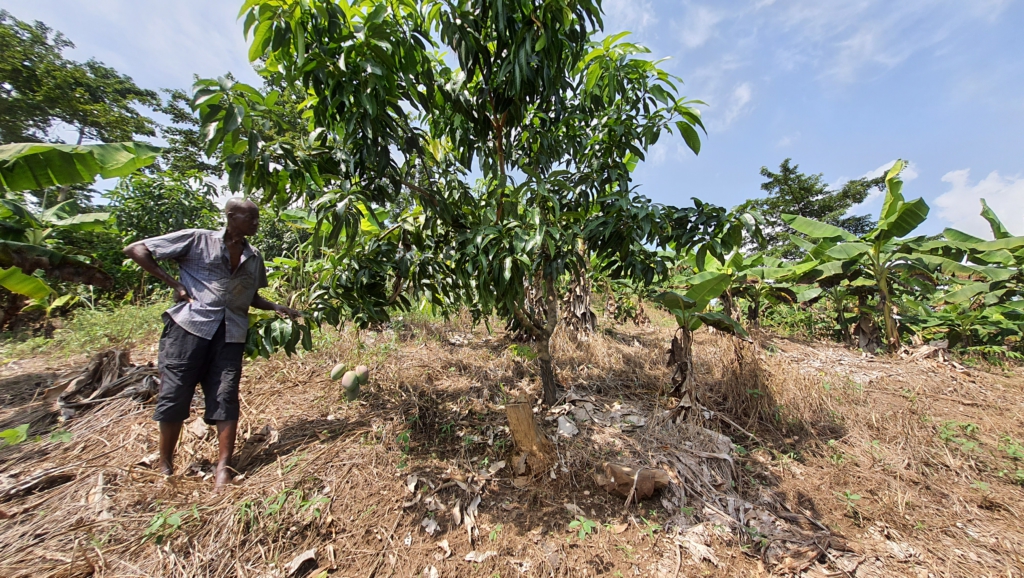
In my interaction with Mr. Ampong, the fishermen chairman, Nile tilapia was blamed for the increase use of drag nets as he says, “catching them with traps is almost impossible due to their agility.
“They’re stronger and able to easily escape from the traps,” he pointed out.
The chairman of the CREMA at Bosomtwe district, Noble Afrifa, however debunks the claim.
“We had a meeting with all the communities and they said it’s not true,” he emphasized.
Mr. Afrifa says measures to stop fishermen from using the drag nets have so far been successful. He observes only Abono, the town of Mr. Ampong, is using the drag nets.
He is optimistic all the communities will soon return to the traditional method of fishing.
“It’s in our bye-laws not to use drag nets and so we’ve warned their leaders. Most of the communities are responding with the exception of Abono,” he noted.
Constructed wetlands
Prince Kankam is assistant head teacher at Abono District Assembly Junior High School.
He is the founder of the Environmental and Science club.
The club which has been in existence for 8 years has been enlightening the pupils on scientific and environmental issues.
The club has been collaborating with Boizenburg/Elbe Germany to venture into constructed wetlands.
“We’ve been on an exchange programme with the Germans since the lake was declared a biosphere reserve.
“We’ve been talking about water and sanitation and how we can keep the water clean as it’s been done in Germany,” he explains how the project was conceived.
Constructed wetlands use natural processes comprising wetland vegetation and soil layers to improve water quality.
These are used to treat municipal or industrial waste water or storm water.
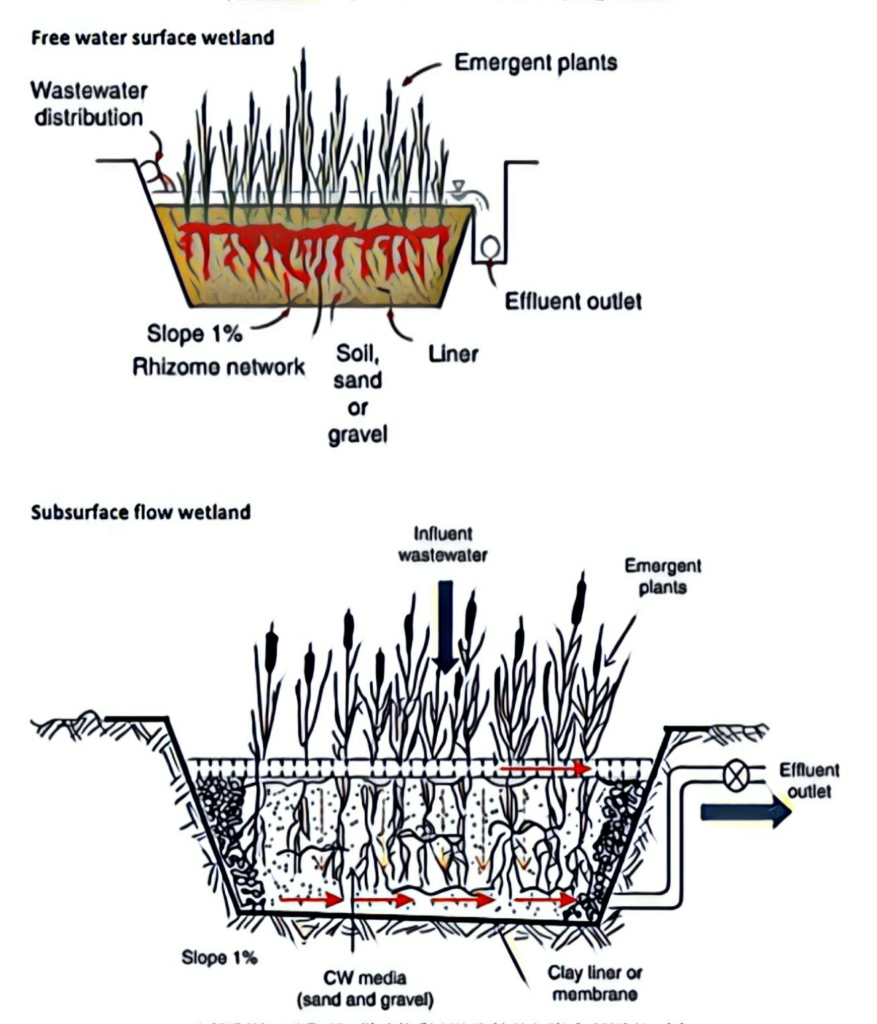
The project will ensure filtration of pollutants from water that flows through on its way to Lake Bosomtwe.
“Wetland project involves construction of small dams to serve as filter for every run off that gets into the lake.
“In the end, it’ll keep the lake very clean,” he’s optimistic.
Green Now App
Bosomtwe District assembly under the aegis of the Manhyia palace and Oheneba Poku Foundation has planted hundreds of trees along the Lake under a project called Asantehene Land Restoration Project.
The aim is to provide a green buffer to reduce erosion by planting three million trees around the lake.
“I want the people to appreciate that we need to protect the lake, Asantehene, Otumfuo Osei Tutu II explains.
As part of the project, a mobile application has been deployed to track trees planted.
The mobile technology will help the track trees planted and specific locations to detect destruction of such trees.
The Green Now mobile app is used to take a picture of a newly planted tree.
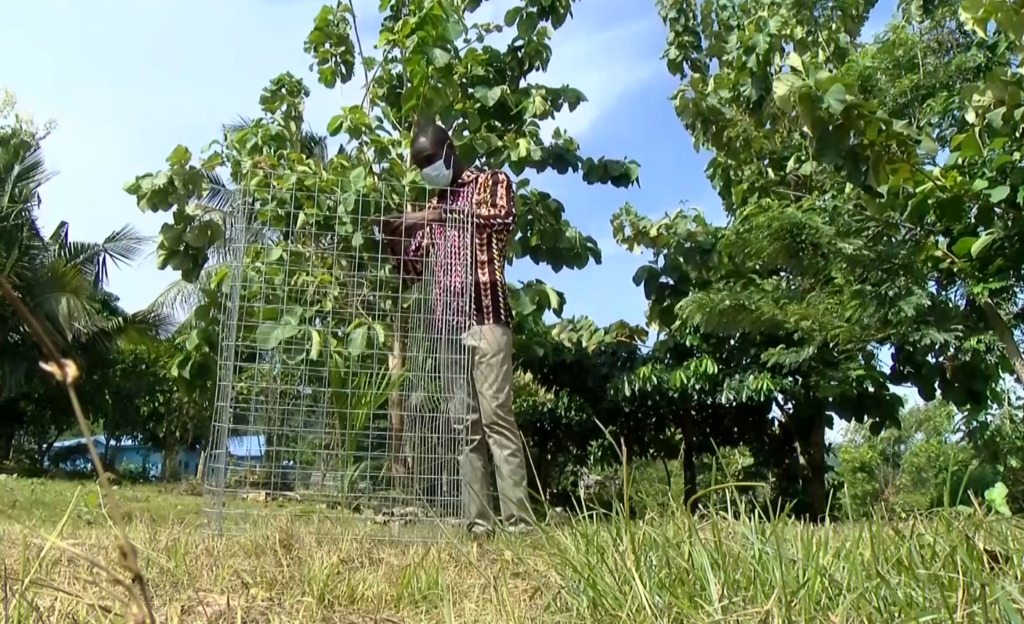
This is uploaded onto the application platform, together with other relevant details of the tree.
Kwasi Mensah is programmes manager of the Oheneba Poku Foundation, implementers of the program.
“You select the tree, the one who planted it and give a brief description of it. At the backend, we pick up the coordinates and mark it to the position of tree.
“All the records will be in the database. 5 to 10 years to come, we’ll be able to know a tree was planted here, and by this person,” he further explains.
Progress of work done by the Foundation can easily be accessed by all interested persons via the application.
Latest Stories
-
Joy FM Prayer Summit for Peace ends in electrifying worship and prayer
3 hours -
The Conscience of Leadership: A call to President Akufo-Addo on Ghana’s environmental devastation
3 hours -
Ghanaian youth unaware of their right to hold politicians accountable – Youth Bridge Foundation
4 hours -
Judge delays Trump sentencing for a third time
4 hours -
2024 WAFCON: Ghana drawn against defending champions South Africa in Group C
5 hours -
Photos from DW-JoyNews street debate on ‘galamsey’
6 hours -
Mimmy Yeboah: Blending heritage with global sophistication, confidence redefined through couture
6 hours -
100 Most Influential People Awards 2024: Brain Hill International School’s Director Mary Anane Awuku honoured
6 hours -
Akufo-Addo commissions 97-km Tema-Mpakadan railway line
6 hours -
Majority requests recall of Parliament
7 hours -
Kanzlsperger and Professor Quartey support WAFA with medical Donation
7 hours -
Gideon Boako donates 10 industrial sewing machines to Yamfo Technical Institute
7 hours -
‘Golden Boy’ Abdul Karim Razak honored at WAFU-B general assembly
7 hours -
Buipewura Jinapor secures Vice Presidential position in National House of Chiefs with record votes
7 hours -
2024 election: I want results to come out like ‘milk and honey’ – Toobu
7 hours

